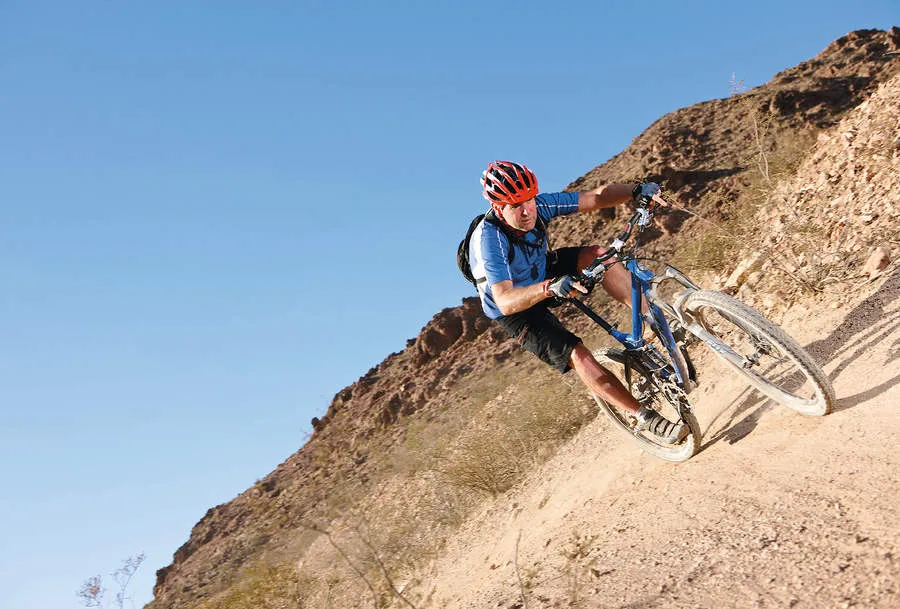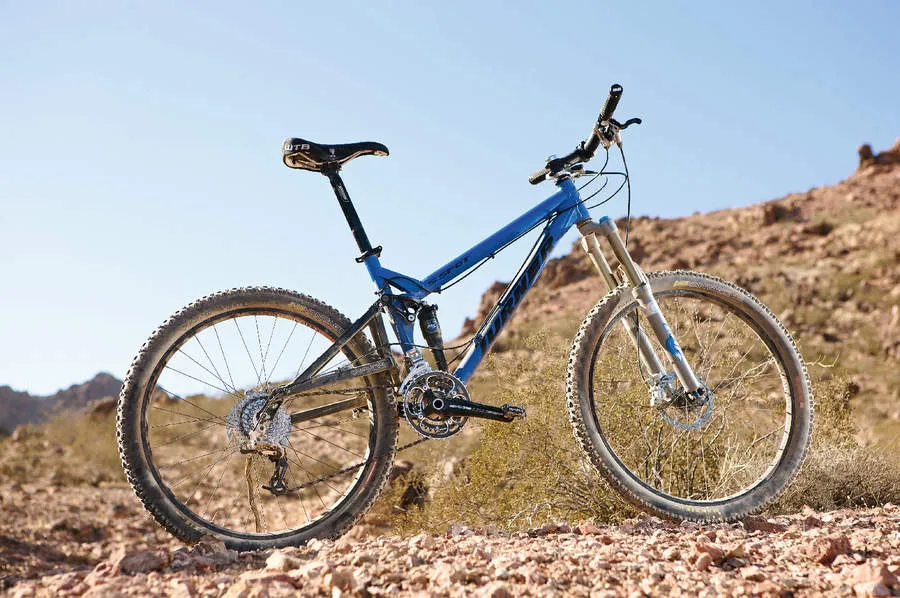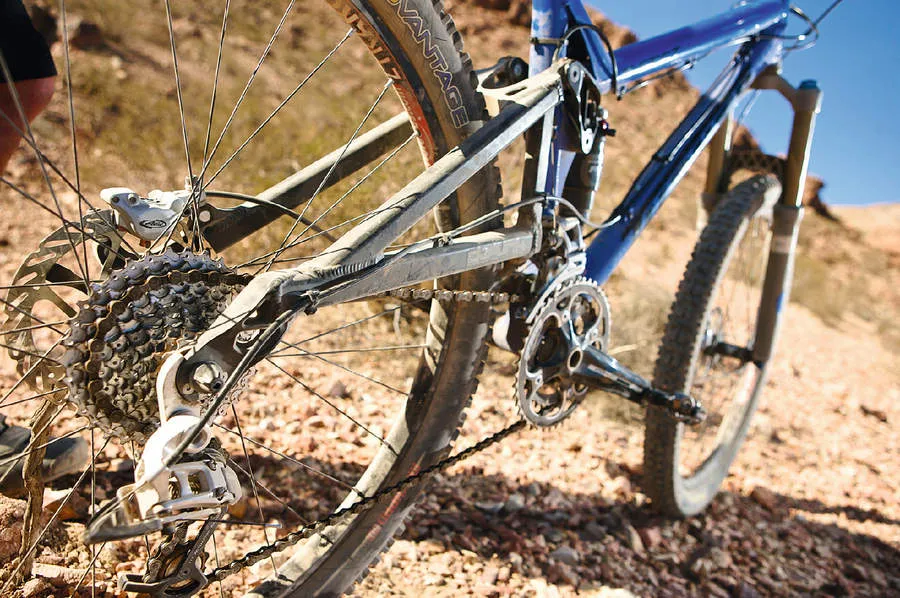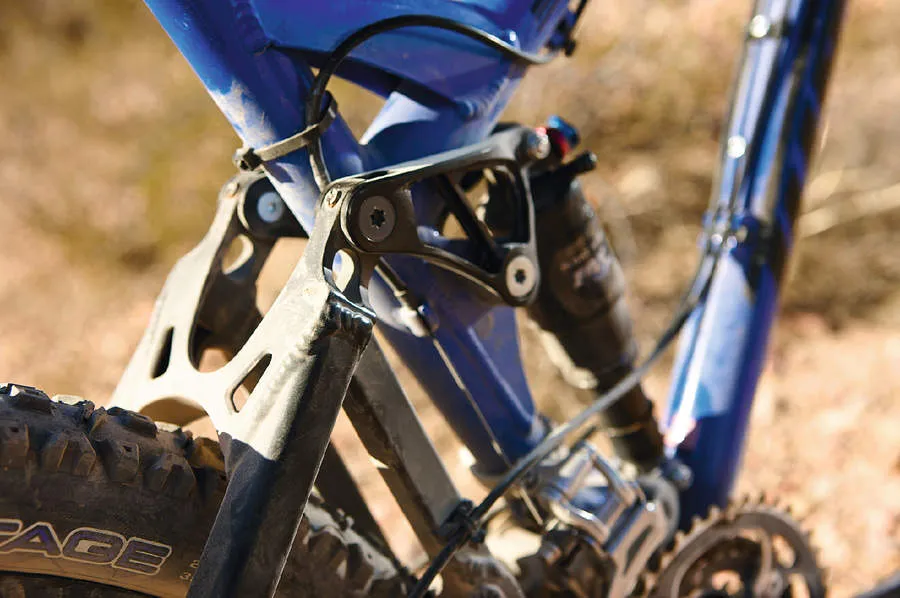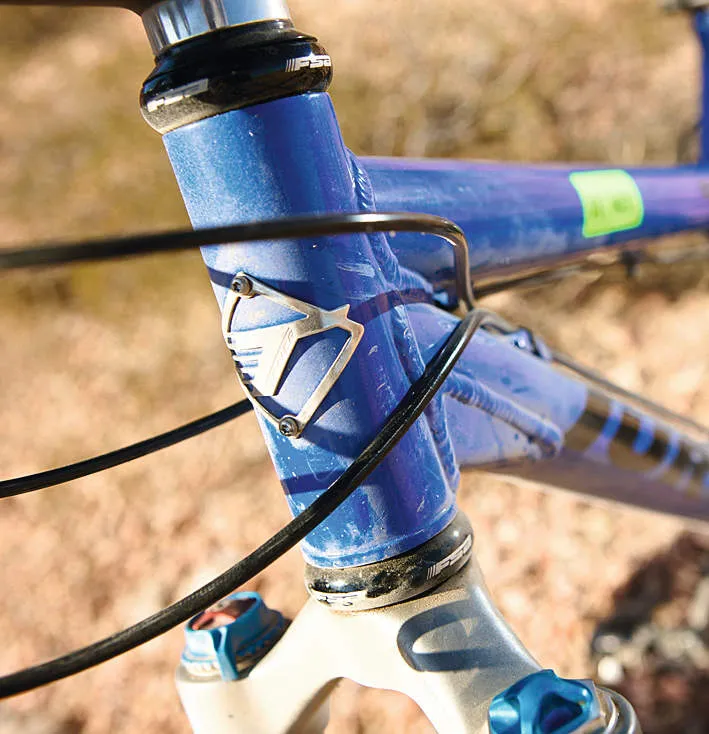Of all the new suspension bikes we spent time with at the Interbike dirt demo day, the new Turner 5 Spot was the one that surprised us the most. First impressions are that it’s not particularly light, neither is it pretty, but we liked it ... a lot. We’ve liked the bikes we’ve tested before with Dave Weagle's unique floating linkage suspension configuration but the 5 Spot may be the most efficient, hard-hitting 5.5in travel dw-link bike out there.
We only spent a couple of hours riding this on the sort of technically demanding and rock-strewn trails where the 5 Spot is in its element. It’s at its best with very little or none of Fox’s ProPedal platform damping dialled in, and that certainly hasn’t been the case with all dw-link bikes we’ve ridden.
It’s carrying a little more weight than some 140mm travel frames, but the weight is built in where it really benefits the ride. We were genuinely surprised by how efficiently the 5 Spot climbed the hills. We couldn’t do it justice on the down sections, but wish we could. Bikes like this extend your limits.
Ride & handling: Is this the ultimate dw-link trail bike?
There are many different approaches to making a dw-link frame, with a host of pivot positioning tweaks slightly changing the overall trail personality of the bike. First impressions are that the ride of the 5 Spot makes the very best of Dave Weagle’s design intentions, and we look forward to getting one for a longer-term test.
So how does the dw-link setup work? Whenever you accelerate on any bike, however smoothly, you lighten the front and shift your weight to the back. Shock damping, and in particular platform damping, tries to prevent this transfer of body mass from combining with drive force and compressing the rear shock, known as ‘squat’. But excessive shock damping also stifles the way a bike deals with bumps.
The dw-link is designed to resist the transfer of body mass without interfering with bump sensitivity. Whatever gear you’re in on the 5 Spot, unwanted compression and pedal feedback feel all but eliminated, while small bump response is retained, resulting in great traction, a predictable and controllable ride feel on terrain that’s hard to read, and a stable pedalling platform on uphill sections.
The 5 Spot manages to encapsulate all that is good about the dw-link design. When the terrain points down, or when barrelling headlong into tight corners, hard braking barely seems to affect the suspension action. Square-edged bumps are softened and traction is improved by the rear wheel axle path – initially super-soft and rearward, nicely balanced with the fork in the middle of the stroke, increasingly damped as you head to maximum travel. In short, ideal for ragged technical terrain but in no way a compromise when the going is smoother.
Short, stiff links between the mainframe and the swingarm ensure that the Turner never exhibits any off-putting flex under extreme situations, contributing to the way our test bike went up hills faster than we expected it to after hanging it on the scales.
Frame: Designed and built for functionality
We haven’t stripped one down to check precise facts and figures yet but Turner says the 5.5in (140mm) travel 5 Spot weighs 6.7lb. It’s described as an ‘enduro trail/adventure cross-country’ bike, so the weight is reasonable unless you compare it to state-of-the-art, Far Eastern-built swoopy aluminium or carbon offerings. But that’s not what the Turner approach is about. A Turner frame is a workmanlike tool, designed and built for functionality, and with barely a nod toward fashion.
The essentially round mainframe tubes are reinforced where they need to be, gusseted behind the beefed-up head tube and bridged from the low standover top tube to the extended seat tube. Asymmetrical, box-section seat and chainstays keep the swingarm super-stiff, and top quality pivot bearings use grease nipples to keep them running smoother for longer. There’s plenty of rear mud clearance and the seat clamp faces forward, away from rear wheel spray.
The geometry is designed to be reasonably neutral, but this depends on which fork you choose to fit. With fork travel matching a plush but superbly controlled 140mm out back (our test bike used Fox’s RP23 shock and felt at its best on a minimum ProPedal setup), the head angle is a confidence- inspiring 69°, with a 73° seat angle sitting you nicely in the centre of the bike, encouraging you to really use the fork and simply let the back end follow through.
Equipment: Light build keeps weight under 30lb
The 5 Spot was equipped with a sensibly light set of components to keep the weight under 30lb, although it’s one of those bikes that feels lighter in action than it is on the scales. The drivetrain on our test bike mixed SRAM XO with an FSA crankset. The wheels used Stan’s light but tough ZTR Arch rims shod with Maxxis Advantage 2.25in treads, brakes were Avid Juicys and the finishing kit was sensible mid-weight stuff all-round.
Dave Turner, suspension pioneer and founder of Turner Bikes, talks about the idea behind the 5 Spot
Can you explain how the 5 Spot manages to be so stable on the climbs and under power while being so smooth on the bumps?
Most current MTBs are equipped with shocks that use compression damping to control squat and bob. This adds stability on climbs, but on descents or fast pedalling sections, the compression damping that helps stabilise the bike on climbs is working against it on the bumps, creating spikes of bump energy, passed on to the rider. This reduces control, as traction is lost every time the tyre is off the ground.
The opposite is true with a dw-link equipped bike. With anti-squat handled by the position, angles and lengths of the linkage, the shock can be specced with far less compression damping so that on hard pedalling sections, a dw-link bike is stabilised by the precise design of the linkage.
Do you think the dw-link setup is just as performance-relevant on shorter-travel, lighter-weight bikes, or less so?
I believe the dw-link is just as performance-relevant on short-travel bikes as on longer-travel ones. Short-travel riders want a firmer feel that is close to a hardtail. If I thought enough riders would buy a shorter-travel, fast-feeling bike that would float over the small bumps that short-travel bikes are primarily used on, then I’d build it!
As many racers know, when really hammering a hardtail or super-firm XC full suss, the rear skips about a fair bit. This would be largely eliminated with the lighter damping allowed by the dw-link, because the tyre would be able to track the ground under hard accelerations. With a dw-link anti-squat optimised for that type of riding, the bike would snap out of corners and up climbs as close to a hardtail as any full suss ever could.
